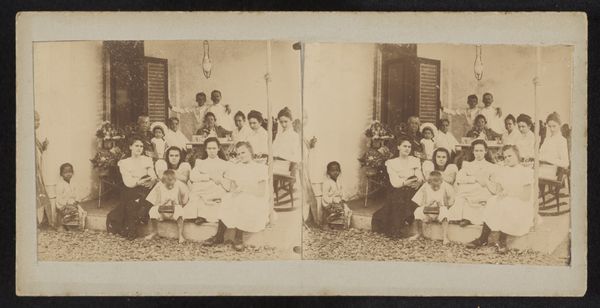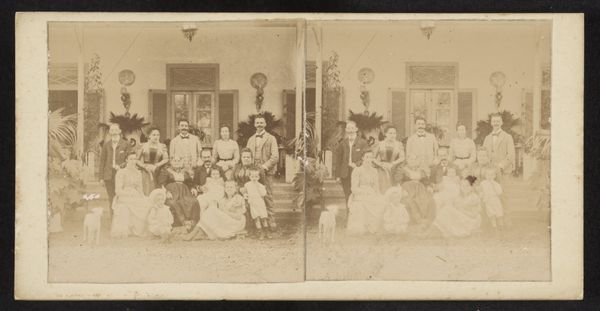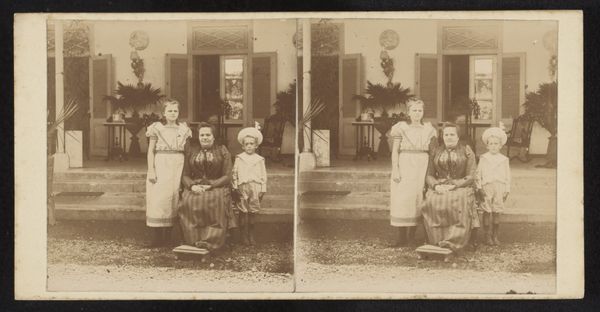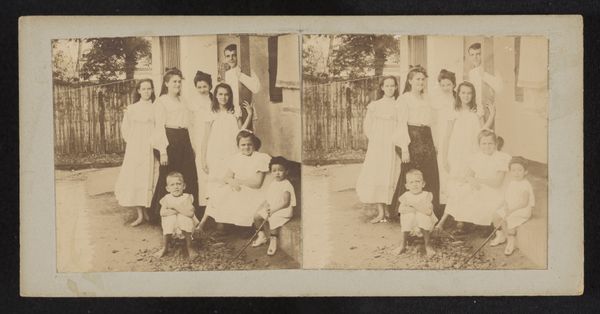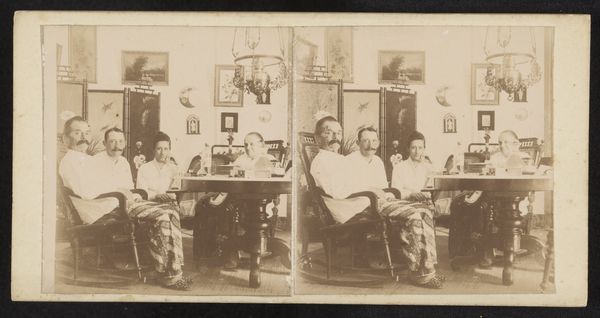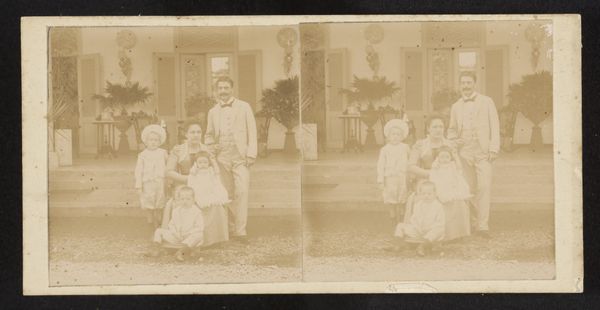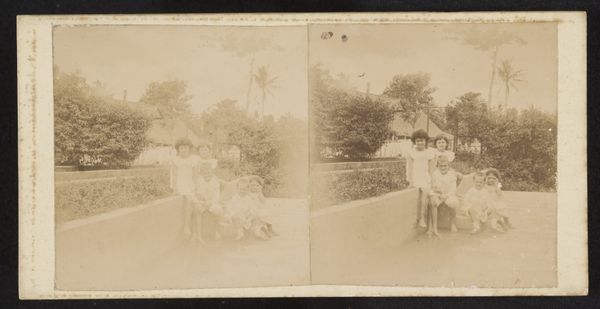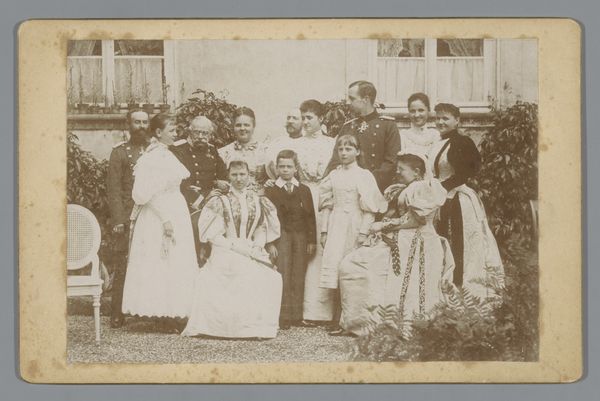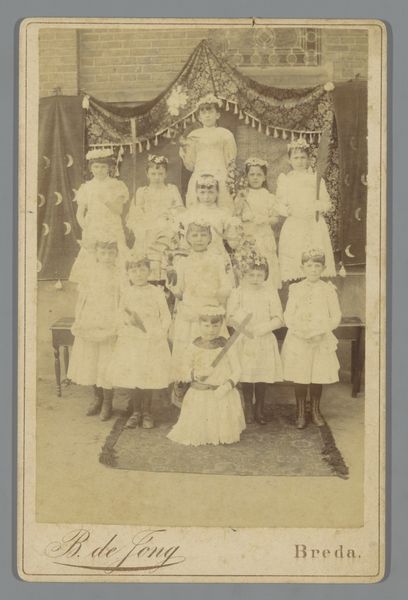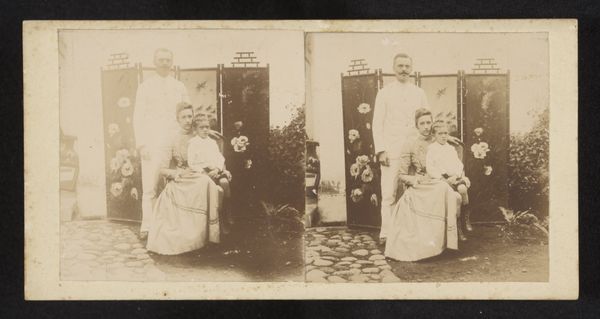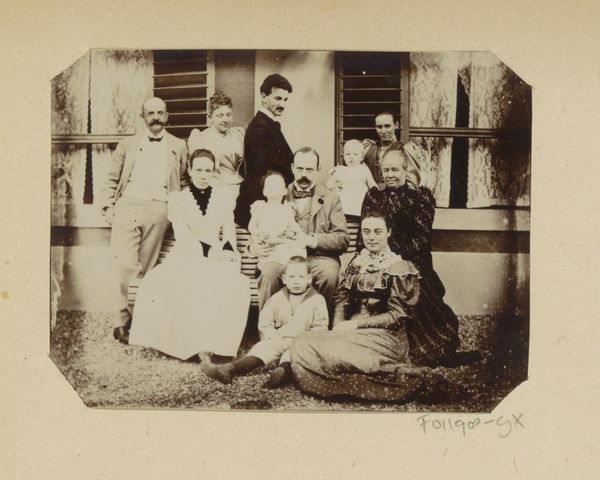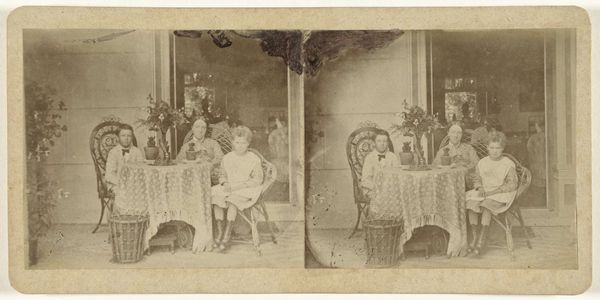
photography, gelatin-silver-print
#
portrait
#
photography
#
group-portraits
#
gelatin-silver-print
#
academic-art
#
realism
Dimensions: height 72 mm, width 80 mm, height 88 mm, width 178 mm
Copyright: Rijks Museum: Open Domain
Curator: What we have here is "Family Portrait," a gelatin-silver print dating from approximately 1900 to 1922, attributed to Robert Julius Boers. Editor: The subdued tones really give this a sense of solemnity. Everyone's arranged just so, almost symmetrical across the photograph. The lighting casts long shadows, especially behind the figures, which contributes to the gravity. Curator: Looking at the composition, it speaks volumes about social dynamics. Notice how the family members are placed on a porch with women in the foreground and what seem to be servants arranged in the background, and that these groups appear separated across class and labor lines. It makes you wonder about who commissioned the work and how labor was used and consumed to enable family lifestyle. Editor: Yes, and observe the clothing: all those whites and creams contrasting sharply with the dark shadows, it draws the eye and heightens the formal rigor, giving shape to that contrast of privilege and servitude that you've observed. I'm also struck by the use of repetition; those faces gazing out seem arranged, giving it a certain compositional structure. Curator: Indeed, the photographer here shapes a careful performance of status for this family. But the creation of these photographs required labor beyond just the arrangement, this being created as a gelatin print also speaks to that specific material and technological aspect in photographic making and labor. Editor: The flatness created by the photography itself also creates tension. Even though depth is visible on the image and through shadows, the work reminds me of early painting when representation, in that fashion, felt so unique. It is fascinating how a single gelatin-silver print can speak such an impactful meaning just by using the intrinsic qualities. Curator: Considering that, the medium provides access to this past culture—their lifestyle and social status, that this print could enter into a global circulation with people consuming images as commodities from faraway lands. Editor: Well, seeing it this way, and appreciating these compositional elements and that material background provides layers and additional meaning for interpreting such works. Curator: And to think about these artifacts entering in to circulation so viewers can appreciate images that carry this historical and artistic knowledge!
Comments
No comments
Be the first to comment and join the conversation on the ultimate creative platform.
